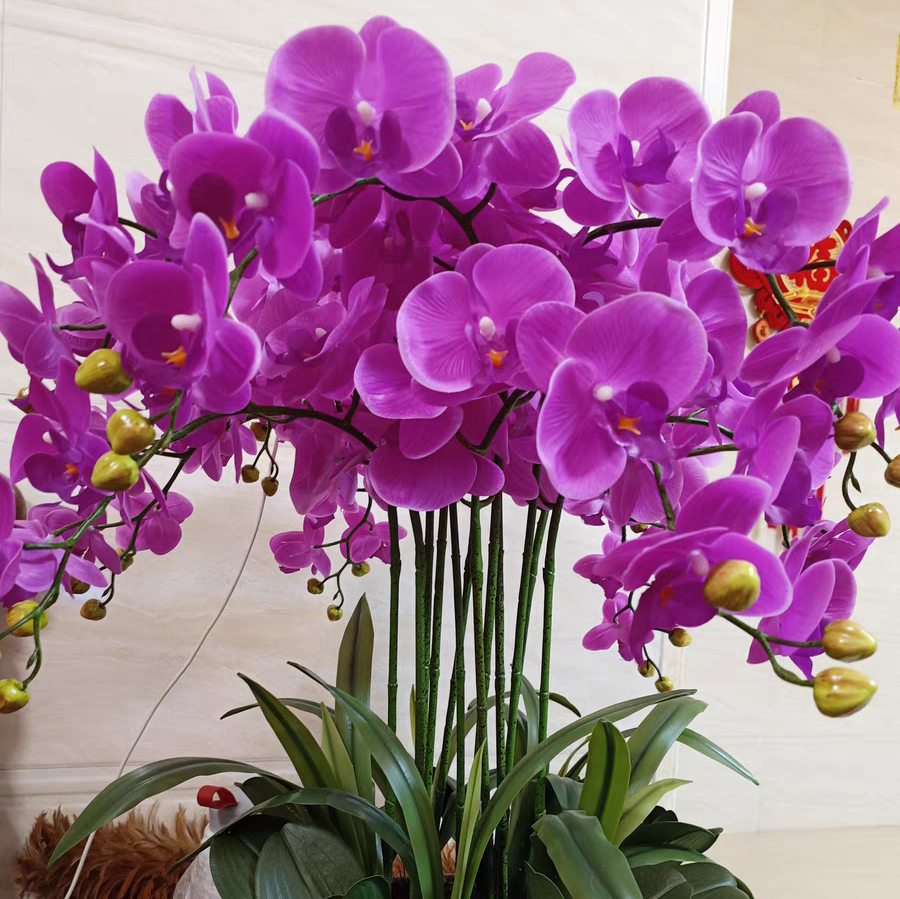What should I do if the root system of a Phalaenopsis orchid is underdeveloped?

Share with
Don't worry if the roots of the Phalaenopsis orchid at home are not well-developed. You can help it recover gradually by following these steps:
1. **Trim and Disinfect the Roots**
Use scissors wiped with alcohol to cut off all hollow and blackened rotten roots, leaving only the white, plump, and firm healthy roots. After trimming, soak the roots in a carbendazim solution for half an hour for disinfection. Then take them out and let them air-dry in a cool, ventilated place for 5-6 hours. Repot only after the wounds are completely dry to avoid infection.
2. **Planting Medium**
- **Humid Areas**: Use a mixture of 60% crushed bark and 40% sphagnum moss. The bark provides good air permeability, while the moss retains moisture, preventing root suffocation when used together.
- **Dry Areas**: Use pure sphagnum moss directly or add 10% volcanic stone granules to help the roots "breathe."
*Tip*: Avoid using ordinary garden soil, as it will compact after several waterings, easily causing root rot in Phalaenopsis.
3. **Flower Pot Selection**
Give priority to青山盆 (青山盆, a type of breathable pot), root-control pots with vertical holes, or transparent plastic pots, which allow you to observe the root status at any time. Do not use overly large pots; choose one that is just slightly larger than the original root ball. Deep pots and glazed ceramic pots may look beautiful, but they are highly impermeable and should be avoided.
4. **Daily Maintenance**
- **Watering**: Water thoroughly with room-temperature water only when the sphagnum moss turns white and feels dry, until water leaks from the bottom of the pot. Water once a week in summer and once every two weeks in winter.
- **Environment**: Maintain a temperature of 18-28°C. Open windows for ventilation for at least 2 hours daily or use a small fan to circulate air. Avoid direct sunlight; place the orchid on an east or west windowsill, or use a sheer curtain to filter sunlight on a south windowsill.
- **Fertilization**: Do not fertilize if the roots are not well-developed, as this may "burn" the roots! Once new roots emerge, dilute orchid nutrient solution 3,000 times with water and apply it every two weeks—keep the concentration light.
- **Inspection**: Check the leaves and roots weekly. If you notice yellowing leaves, black spots, or roots turning black and soft again, immediately remove the plant from the pot, trim and disinfect the roots again, and do not delay.
In short, as long as you follow these methods and be patient, the Phalaenopsis roots will gradually recover, and the plant will bloom again!
Tagged in :




Leave a Reply